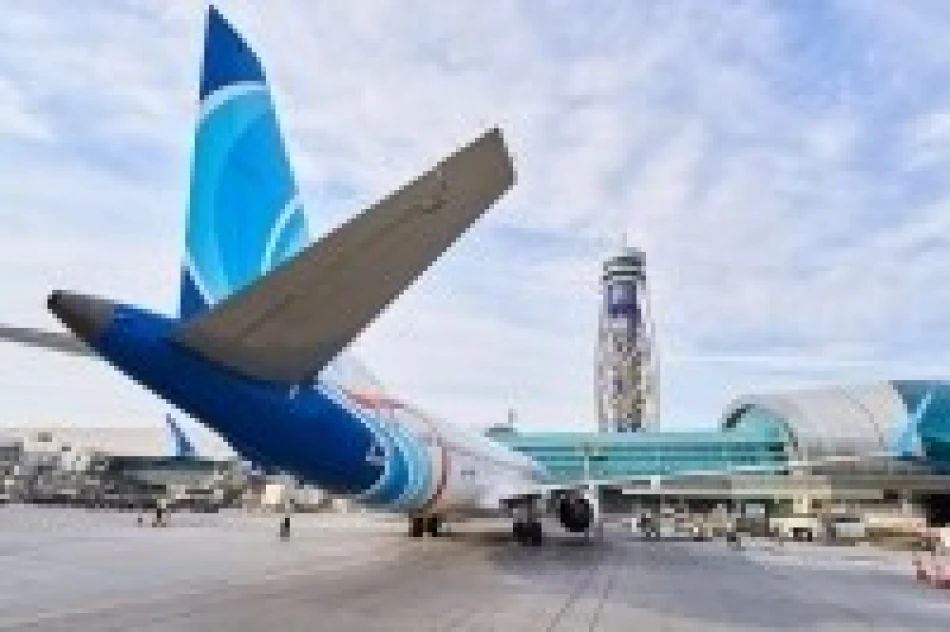
Dubai Airport Sees Surge: 46 Million Passengers in First Half of 2025
Dubai Airport Smashes Records with 46 Million Passengers as Regional Tensions Fail to Deter Growth
Dubai International Airport has defied regional instability and global travel uncertainties to achieve its strongest first-half performance in history, welcoming 46 million passengers between January and June 2025—a 2.3% increase that underscores the emirate's resilience as a global aviation hub. The milestone positions Dubai to potentially breach the symbolic 100 million annual passenger threshold, cementing its status as the world's busiest international airport.
Record-Breaking Performance Amid Challenging Times
The airport's exceptional performance becomes even more remarkable when viewed against the backdrop of ongoing regional tensions and global economic uncertainties. During the second quarter alone, Dubai International processed 22.5 million passengers, representing a 3.1% year-on-year growth. April emerged as the standout month, with 8 million passengers passing through all terminals—the busiest April in the airport's history.
Sheikh Ahmed bin Saeed Al Maktoum, Chairman of Dubai Civil Aviation Authority and CEO of Emirates Group, emphasized that this robust performance reflects not just infrastructure strength but global confidence in Dubai's stability. "Despite regional challenges, Dubai International continues to embody trust, stability, and global connectivity," he noted, highlighting how the airport serves as a beacon of normalcy in an often turbulent region.
Operational Excellence Under Pressure
The airport's ability to maintain exceptional service levels while handling record volumes demonstrates sophisticated operational management. With 99.2% of departing passengers clearing immigration in under 10 minutes and 98.4% of arrivals processed within 15 minutes, Dubai International has set new benchmarks for efficiency. The airport handled over 41.8 million bags, with 91% delivered within 45 minutes of arrival and only two delayed bags per 1,000 passengers.
Strategic Positioning for the 100 Million Milestone
Paul Griffiths, CEO of Dubai Airports, projects the facility will handle 96 million passengers by year-end, positioning it within striking distance of the 100 million annual passenger mark. This projection isn't merely optimistic speculation—it's based on concrete factors including the upcoming Dubai Airshow 2025, winter event season, and sustained demand from key markets.
The airport currently connects to 269 destinations across 107 countries through 92 international carriers, creating a network density that few competitors can match. This connectivity advantage becomes crucial as other major hubs like Singapore Changi and London Heathrow face their own capacity and operational constraints.
Market Dynamics and Geographic Spread
India remains Dubai's largest passenger source with 5.9 million travelers, followed by Saudi Arabia (3.6 million), the UK (3 million), Pakistan (2.1 million), and the US (1.6 million). This diversified passenger base provides resilience against economic downturns in any single market—a lesson learned from previous aviation cycles where over-dependence on specific regions proved costly.
Economic Implications and the D33 Vision
These passenger numbers directly support Dubai's Economic Agenda D33, which aims to double the emirate's economy by 2033. Aviation serves as both an economic driver and enabler, with each million passengers typically generating hundreds of millions in economic impact through tourism, business travel, and cargo connections.
The cargo segment, while showing modest 0.1% growth to over one million tons, remains strategically important for Dubai's position in global supply chains. As e-commerce and just-in-time manufacturing reshape logistics, Dubai's geographic advantage becomes increasingly valuable for companies seeking efficient East-West connectivity.
Competitive Landscape and Future Challenges
Dubai's success comes as other major hubs face constraints. Singapore Changi is still recovering from pandemic impacts, while European airports grapple with capacity limitations and staff shortages. However, Dubai faces its own challenges, including the need for continued infrastructure investment and managing growth without compromising service quality.
The upcoming winter season will test Dubai's projections, with major sporting events, conferences, and the traditional peak travel period providing the volume needed to reach that ambitious 96 million target. Success would not only validate Dubai's aviation strategy but also demonstrate the emirate's ability to thrive despite regional uncertainties—a message that resonates far beyond the aviation sector.
 Layla Al Mansoori
Layla Al Mansoori







